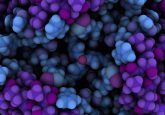Proteins detected by synthetic antibody

A new method for detecting proteins through the use of carbon nanotubes has been developed by MIT (MA, USA) chemical engineers. One protein that is identifiable using the method is fibrinogen, which is one of the coagulation factors critical to the blood-clotting cascade.
If the approach can be developed into an implantable sensor, it could be useful for monitoring patients taking blood thinners and would allow doctors to ensure the drugs aren’t interfering too much with blood clotting.
This is the first time that a method of creating synthetic recognition sites (similar to natural antibodies) has been used for proteins, which couples them directly to a powerful nanosensor such as a carbon nanotube. Significant progress has also been made on a similar recognition site for insulin by the same team, which should allow better monitoring of patients with diabetes. Micheal Strano the Carbon P. Dubbs Professor in Chemical Engineering at MIT also said that detecting proteins associated with cancer or heart disease could be a possibility using this same approach.
Strano is the senior author of a paper describing the method in Nature Communications. Strano’s lab developed the method known as Corona Phase Molecular Recognition (CoPhMoRe) of which the new sensor is the latest example. CoPhMoRe takes advantage of interactions between a given polymer and a nanoparticle surface such as that of a fluorescent single-walled carbon nanotube.
The technique of CoPhMoRe works through the adsorption of a specific polymer to the nanoparticle surface creating a corona (outward-facing region) that recognizes the target molecule. As with the binding of antibody and target, these interactions are very specific. The researchers are able to measure how much of the target molecule is present as binding of the target alters the natural fluorescence of the carbon nanotubes.
The approach has previously been used by Strano’s lab to find recognition sites and develop nanosensors for, among other molecules, estradiol and riboflavin. This research is the first attempt to identify corona phases that can identify proteins. In comparison with the molecules identified by previous sensors, proteins are larger, more complex and more fragile.
In this study carbon nanotubes wrapped in 20 different polymers were screened by the researchers. Polymers tested included DNA, RNA and polyethylene glycol (PEG), which is often added to drugs to increase their longevity in the bloodstream.
None of the polymers, when on their own, had any affinity for the 14 proteins tested, which were all taken from human blood. However, a match was identified between one of the modified nanotubes and fibrinogen when the researchers tested the polymer-wrapped nanotubes against the same proteins.
Doctors could use the fibrinogen sensor to help gauge if patients taking blood thinners still have enough clotting capability to protect from injury. It could also be used by doctors to calculate more finely tuned dosages and to test patients’ blood clotting before they go into surgery or to monitor wound healing.
The synthetic molecular recognition agents are believed, by the researchers, to be an improvement over existing natural systems based on antibodies or DNA sequences known as aptamers as these are more fragile and tend to degrade over time.
As well as insulin, troponin is another molecule that the researchers are interested in detecting as this protein is released by dying heart cells. Proteins associated with cancer are another target as these would be useful in monitoring the success of chemotherapy. Protein sensors could, in the future, become critical as components of devices that respond to a sign of illness by delivering drugs.
“By measuring therapeutic markers in the human body in real time, we can enable drug delivery systems that are much smarter, and release drugs in precise quantities,” Strano says. “However, measurement of those biomarkers is the first step.”
Sources: Bisker G, Dong H, Park HD et al. Protein-targeted corona phase molecular recognition. Nat. Comms (DOI: 10.1038/ncomms10241) (2016); Synthetic antibody detects proteins.






